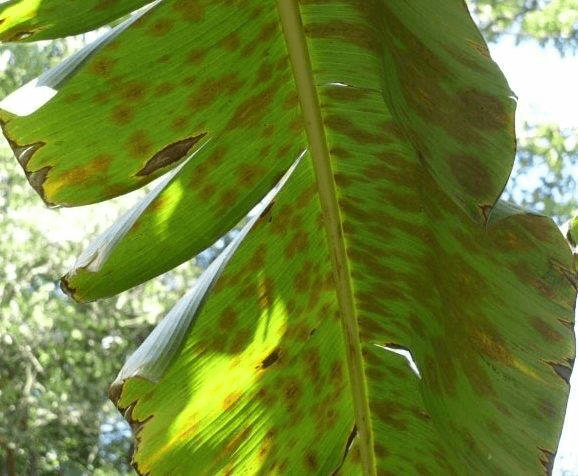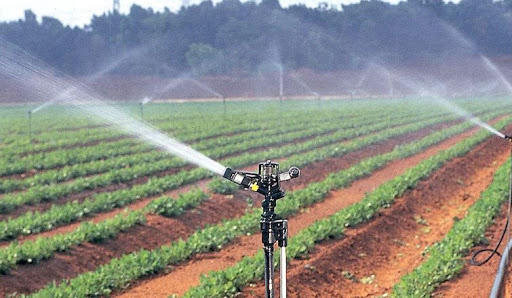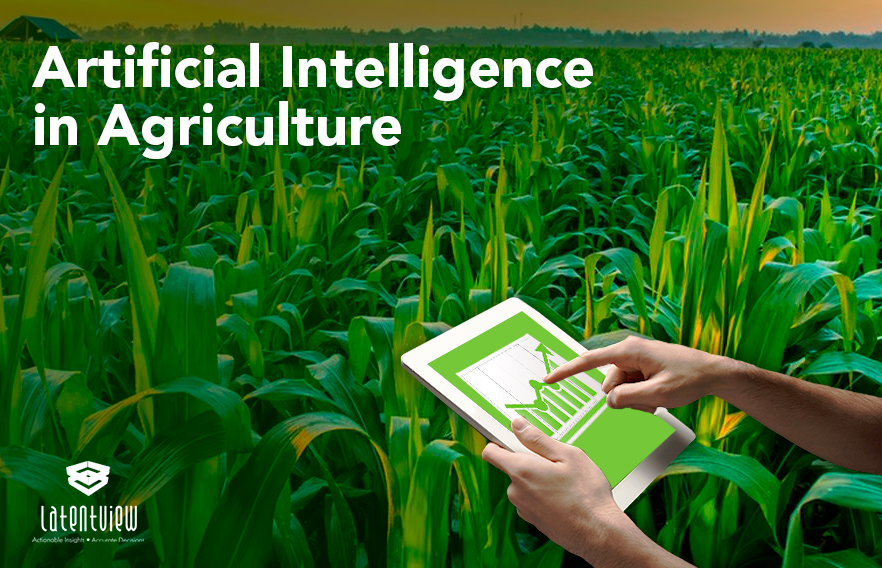Introduction
Artificial intelligence technology is being adapted in different sectors like healthcare, automotive, manufacturing, finance, agriculture and assisting them to overcome the traditional challenges to boost productivity and efficiency. This blog explores the massive adoption of artificial intelligence (AI) in the agricultural sector. . We will also dive into the most popular applications of AI in agriculture and some use cases.
Deep learning is an artificial intelligence function that imitates the human brain in processing data and creating patterns for use in decision-making. It includes modern techniques for image processing and big data analysis with immense potential. Different deep learning techniques are being applied to various agriculture problems such as disease detection, fruit or plant classification and crop management process.
AI Market Share in Agriculture
The global AI valuation in the agriculture market was at $671.6 million in 2019 and approximated to reach about $11,200.1 million in 2030, signifying a CAGR of 30.5% during the forecast period (2020-2030). The precision farming category generated the largest revenue in the AI in the agriculture market.
Among all regions, North America retained the largest share of AI in the agriculture market in 2019. This is because of their higher adoption of advanced technologies in the agriculture sector. Companies like IBM Corporation and Raven Industries Inc. are progressively collaborating with other companies to raise their contribution to the agriculture industry.

Applications of AI in Agriculture
Agriculture is the foundation of the world’s economy. In 2016, agricultural sectors contributed to just under 1% of the US GDP. The US Environmental Protection Agency (EPA) estimates that agriculture contributes around $330 billion annually to the economy. There is an estimation that the world will need to produce 50% more food by 2050 due to increase in the population. Based on the research, the most popular applications of AI in agriculture fall into below three major categories.
- Agricultural Robots: Companies are developing and programming autonomous robots to handle essential agricultural tasks such as weed control, planting seeds, harvesting, environmental monitoring and soil analysis at a higher volume and faster pace than humans.
- Crop and Soil Monitoring: Companies are investing in computer vision and deep learning algorithms to process data captured by drones or by software based technology to identify possible defects and nutrient deficiencies in the soil.
- Predictive Analytics: Machine learning models are developed to track and predict various environmental impacts on crop yield such as weather and climate change.
Some use cases of Artificial Intelligence in Agriculture
- Banana Leaf Disease Classification:
Crop diseases are major sources of deprivation and food insecurity on our planet. It is estimated that plant pathogens may result in up to 16% crop yield losses globally. Plant disease detection can be done by observing the spot on the leaves of the affected plants. Banana is mainly threatened by two types of diseases.
- Banana Sigatoka: It is caused by the fungus Mycosphaerella fijiensis. The symptoms start by minuscule, chlorotic spots and it then develops into thin brown streaks that are bounded by leaf veins.
- Banana Speckle: It is a fungal disease. Its symptoms start as little light brown spots and then become big and black.
Some unhealthy banana leaf sample images are given below.

Method Used: A Computer Vision tool automates the process of classifying disease in banana leaves. Below is the flow showing general steps in plant disease detection.

2) Automated Irrigation System: One of the major drawbacks of conventional irrigation systems is water wastage. With the help of advanced technology, many companies have developed a sensor based smart irrigation system for optimal water usage.
In this system, soil moisture and temperature sensors interact directly with embedded components on the field and take care of required water distribution among crops without farmer’s interaction. This system helps to maintain the desired soil, water range in the root zone optimal for plant growth.

Several types of such systems are:
- Closed Loop System: This system is based on a predefined irrigation scheme the control system takes over and makes detailed decisions on when and how much water to apply.
- Open Loop System: This is based on the amount of water to be applied and the timing of the irrigation.
- Time based System: This system works with time clock controllers.
3) Drone Technology: Drone technology in agriculture is already an essential part in precision farming operations. The data collected from drones help farmers in achieving the best possible yields.
Below are some of the areas where drone technologies are used in agriculture.
- Monitoring field conditions: The drone is used to monitor the health of soil and field conditions. Drones can provide accurate field mapping, including elevation information that allows farmers to find any irregularities in the field. This information is useful in determining drainage patterns and wet/dry spots.
- Product spraying and fertilization: Drones are capable of spraying plants with much more precision than a conventional tractor. Yamaha RMAX is the first drone weighing more than 55 kilos to carry fertilizer and pesticide tanks to spray plants. This helps to reduce cost and pesticide exposure to workers who need to spray plants manually.
- Security: Drone security is being used in farm management. Drone cameras are used to provide an overview of farm operations throughout the day to ensure operations are running smoothly. Monitoring remote areas, which used to take hours of walking can now be monitored in a few minutes with the help of drone cameras.
Challenges in AI adoption in agriculture
Though Artificial Intelligence provides huge opportunities for application in the agriculture sector, there is still a lack of familiarity of high-tech machine learning solutions in farms across most parts of the world. AI based robots cost a lot of money in research and development and they also need maintenance to keep them running smoothly.
AI systems need a lot of data to train machines and to make precise predictions. In case of wide agricultural land, though spatial data can be gathered easily, temporal data is hard to get. For example, most of the crop-specific data can be obtained only once in a year when the crops are growing. Since the data infrastructure takes time to mature, it requires a significant amount of time to build a robust machine learning model.
Conclusion
The adoption of AI technology will be helpful in predicting weather and other conditions related to agriculture like land quality, groundwater, crop cycle, and plant disease detection which are critical problems. However, agriculture cannot be totally dependent on AI as they cannot work outside of what they were programmed for. Also, farmers especially in rural areas lack the technical knowhow and awareness about the existence of such technologies. As more awareness is created and technologies become accessible to the average farmer, there is a future where agriculture can be semi-autonomous with artificial intelligence leading the way.



